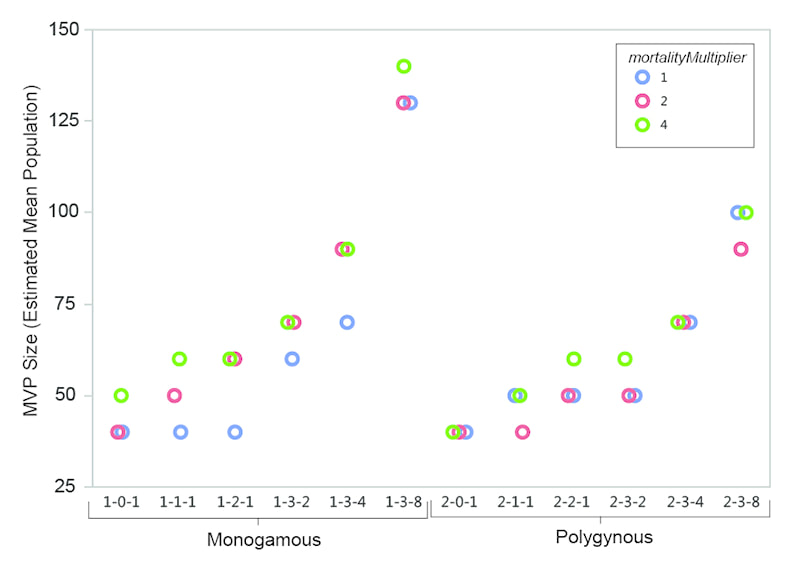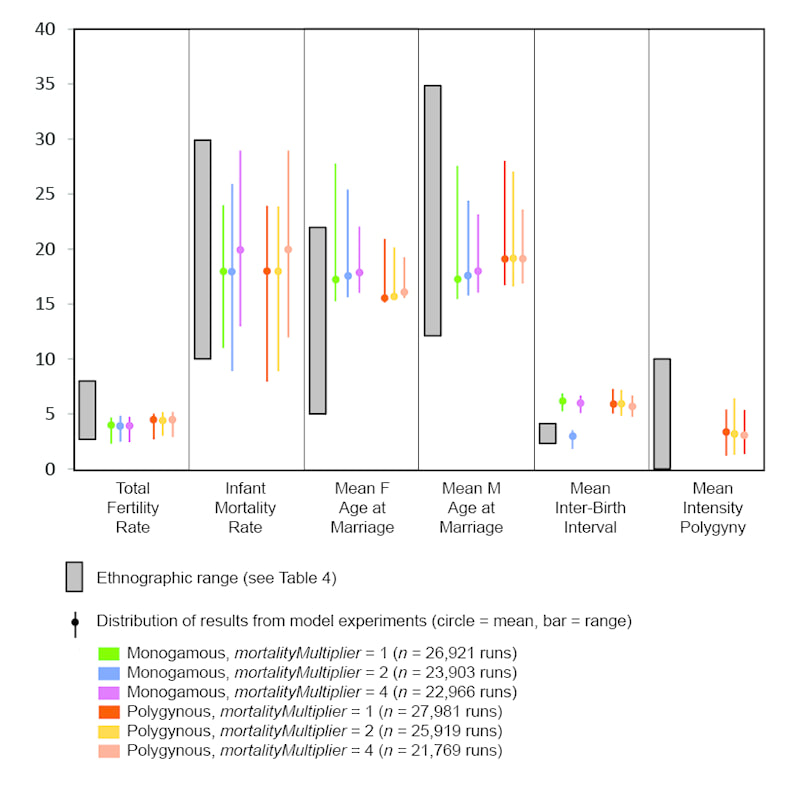My paper, titled "A Model-Based Analysis of the Minimum Size of Demographically-Viable Hunter-Gatherer Populations" will appear in Volume 20, Issue 4 (due to be released on October 31). You can read the paper online here. It should be available in pdf form soon.
If you really want to get into the nitty gritty, the raw model code and an explanation are available here.
The focus of the paper using an agent-based model to revisit the question of how large human groups have to be to be demographically viable (i.e., able to survive over the course of many generations). This is a key question for understanding the size and structure of ethnographically- and archaeologically-known hunter-gatherer social systems as well as fleshing out scenarios of hunter-gatherer groups colonizing empty landscapes. Here is the abstract:
"A non-spatial agent-based model is used to explore how marriage behaviors and fertility affect the minimum population size required for hunter-gatherer systems to be demographically viable. The model incorporates representations of person- and household-level constraints and behaviors affecting marriage, reproduction, and mortality. Results suggest that, under a variety of circumstances, a stable population size of about 150 persons is demographically viable in the sense that it is largely immune from extinction through normal stochastic perturbations in mortality, fertility, and sex ratio. Less restrictive marriage rules enhance the viability of small populations by making it possible to capitalize on a greater proportion of the finite female reproductive span and compensate for random fluctuations in the balance of males and females."
My modeling results suggest that the number of people required for demographic viability can be safely pushed down south of 200. In over 67,000 model runs (under varying conditions of mortality, fertility, and marriage rules) where the mean population exceeded 150 people, the population went extinct only nine times. I'd take those odds.
All the modeling was done under conditions with no logistical constraints to identifying and obtaining marriage partners: no spatial component to interaction, no impediments to the flow of information. Logically, putting the model systems in space and dispersing the populations across a social/physical landscape would have the ultimate effect of raising the population size required for demographic viability. Would it double or triple it, though? I highly doubt it. But the great thing about modeling is that we don't have to be satisfied to simply suppose things -- we can model the problem. Understanding that less than 200 people are required for demographic viability assuming no interaction issues, we can then unpack the issue to ask why hunter-gatherer societies are often much larger. What role does the structure of mobility play? What about the need to maintain a geographically-extensive social fabric to buffer large-scale environmental variability? Here are a couple of paragraphs from my conclusion:




 RSS Feed
RSS Feed
